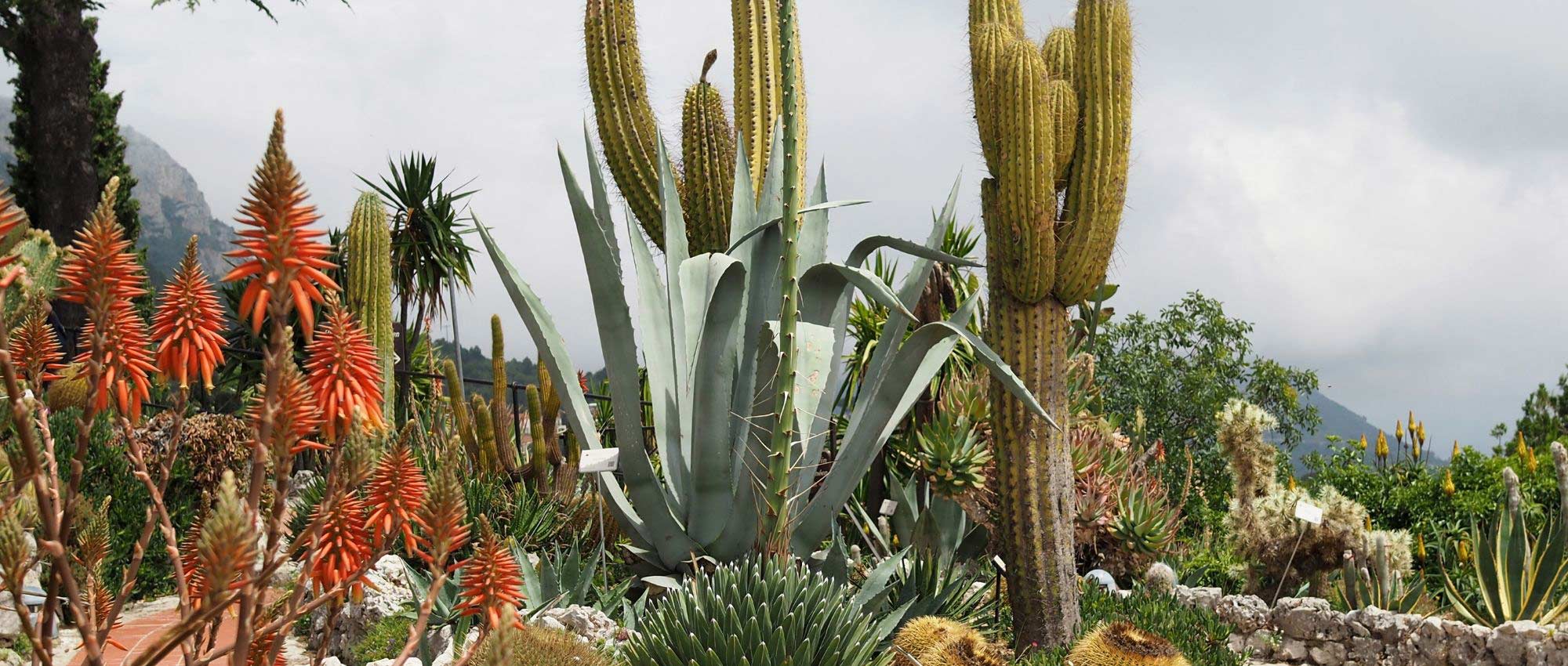
Cacti and outdoor succulents: planting, growing, and care
Contents
Cacti and succulents in a nutshell
- Cacti and succulents create a very exotic atmosphere in the garden!
- Although most are tender, some species are quite hardy!
- These plants require very little maintenance.
- It is important, however, to protect them from moisture in winter.
- They are perfect for creating a dry garden or a Mediterranean-style garden.
A word from our Expert
Although the majority of cacti and succulents are more suited to indoor cultivation, some can indeed be planted directly in the ground in the garden. Obviously, this primarily depends on where you live: in a region that is little or not exposed to frost, you can plant many more varieties in the garden. Nevertheless, some cacti and succulents can withstand temperatures as low as -20 °C and can therefore be planted in most regions of France. In any case, it is important to consider the hardiness of each species to determine if it will survive the winter in your garden and whether it requires specific protection.
Cacti have the advantage of requiring almost no maintenance: outdoors, they do not need watering. They grow slowly and do not require pruning. However, it is preferable to shelter them from rain in winter, as their main enemy is excess moisture.
Cacti and succulents offer a beautiful diversity of shapes: some are globose, others are upright and ramified, while some succulents form lovely rosettes of leaves, and others have creeping stems, like Sedums. In the garden, it is important to place them in a well-sunny spot and in a draining, porous substrate. These plants are perfect in a sunny rockery, alongside other drought-tolerant plants, such as lavenders, Eryngium, euphorbias, and cistus…
Botany
Botanical data
- Family Cactaceae, Asparagaceae, Asphodelaceae...
- Common name cactus, succulent plants, fleshy plants
- Flowering often very colourful and decorative
- Height highly variable
- Exposure full sun
- Soil type draining, rocky, dry, filtering
- Hardiness variable, down to -25 °C for the hardiest
Cacti and fleshy plants naturally grow in particularly arid environments, and have had to evolve to cope with the blazing sun and long periods of drought. They are xerophytic plants (= adapted to drought). These harsh conditions have led them to take on very particular forms, giving them a silhouette quite different from plants growing in cooler, shaded environments.
However, it is important to distinguish between these plants: all cacti are succulent plants (as their tissues have thickened to store water), but not all succulent plants are cacti! Cacti constitute a distinct botanical family, the Cactaceae, while the broader term “succulent plant” (or “fleshy plant”) encompasses plants from various botanical families (Crassulaceae, Asparagaceae, etc.). These plants simply share the characteristic of having fleshy tissues (usually stems or leaves) that allow them to store water and mineral elements. The term “succulent” means that they store water and mineral elements in the form of juice. It is more accurate than “fleshy plants,” which implies that they store fat, which is incorrect.
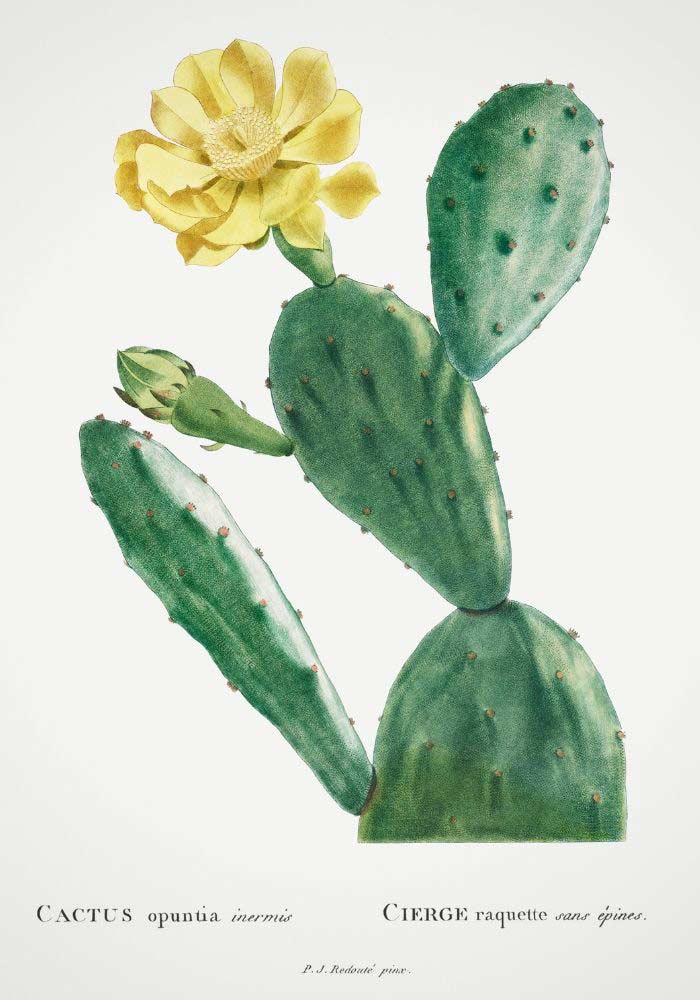
Opuntia inermis: botanical illustration
To withstand drought, cacti and fleshy plants have also adapted their metabolism: it is of the CAM type (Crassulacean Acid Metabolism). This means that these plants open their stomata (small holes in the epidermis of the leaves) at night to carry out gas exchanges (oxygen, carbon dioxide, water…), and close them during the day, which limits water loss. If they opened their stomata during the day like other plants, all the water in their tissues would risk evaporating, and they would dry out very quickly!
Most hardy cacti and succulent plants are species that naturally grow in mountainous regions, at altitude. The Echinopsis subdenudata, for example, originates from the high mountains of Paraguay and Argentina. As for the Cylindropuntia imbricata, it is found in the wild in northern Mexico and the southwestern United States, between 1,200 and 2,300 metres in altitude. The Agave montana, on the other hand, originates from the mountains of northeastern Mexico, between 3,000 and 3,500 metres in altitude. Thus, these succulents and cacti are better adapted to low temperatures than other species that grow in the plains.
Cacti take on quite diverse forms: they can be rounded-globose, like the Echinopsis subdenudata, or form upright stems, as seen in candle cacti. The Cylindropuntia imbricata has a surprising silhouette for a cactus: it forms a true ramified bush! The Opuntia, on the other hand, form flattened stems (called cladodes, or pads), with segments that follow one another. Some opuntias are creeping.
By replacing their leaves with thorns, cacti have gone further than other succulents in adapting to water scarcity. Indeed, leaves are a site of gas exchange with the atmosphere, and thus lead to water loss. Thorns, in addition to protecting cacti from herbivores, can also shelter the plant from the sun (when the density of thorns is high) and capture dew drops. However, there are primitive cacti that still have leaves: the Pereskia.

Some hardy cacti that can be planted in the ground: Cylindropuntia imbricata (photo: Skarz), Opuntia engelmannii ‘Rastrera’, Echinocereus reichenbachii baileyi (photo: Peter A. Mansfeld)
Regarding other succulent plants, most of the time the leaves are still present, but they are fleshy: they have thickened to store water and mineral elements. Additionally, the epidermis is generally covered with a thick, sometimes waxy cuticle, which limits water loss.
Many succulent plants form rosettes with overlapping, fleshy leaves: this is the case, for example, with Agaves, Aloes, and Sempervivum! The Aloe polyphylla is distinguished by its very geometric shape, with leaves inserted in several successive spirals. We can also mention the sedums, which generally have a creeping habit and small, rounded, fleshy leaves. Sedums and Sempervivum are remarkable for the diversity they offer in terms of foliage colours, allowing for the creation of original and colourful flowerbeds.

Hardy succulents: Agave havardiana, Sempervivum arachnoideum ‘Rubrum’ and Aloe aristata
Cacti generally produce very colourful and bright flowers! The Opuntia phaeacantha Mojavensis, for example, bears very beautiful cup-shaped flowers, yellow tinged with reddish-orange. We also appreciate the pink flowers of the Cylindropuntia imbricata. The Echinopsis subdenudata, on the other hand, bears splendid large white flowers.
Among other succulent plants, Aloes offer beautiful colourful flowers, often yellow, orange, or red. We appreciate their warm hues and very exotic style! The Aloe striatula is valued for its very generous flowering, in spikes reminiscent of kniphofia flowers! As for agaves, their flowering is truly impressive: they deploy gigantic flower spikes, very tall. The rosette, however, dies after flowering, but generally, it has had time to produce other rosettes that will then take over.
After flowering, opuntias have the advantage of producing edible fruits: the best are the prickly pears of the Opuntia ficus-indica, but the fruits of most other species can also be consumed. However, care must be taken to remove the prickles from the epidermis before consumption.

The colourful flowering of Opuntia phaeacantha Mojavensis, Aloe aristata, and Echinocereus reichenbachii baileyi
“`
The main varieties of cacti and succulents for the garden
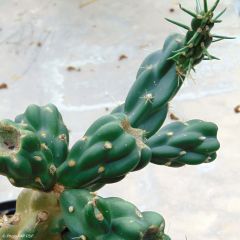
Cylindropuntia imbricata
- Flowering time June, July
- Height at maturity 2,50 m
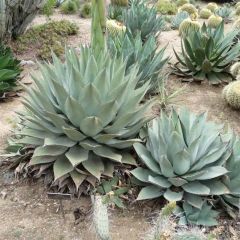
Agave havardiana
- Flowering time August, September
- Height at maturity 50 cm
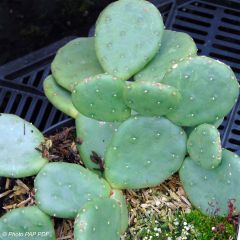
Opuntia compressa Millevaches - Prickly Pear
- Flowering time June, July
- Height at maturity 30 cm
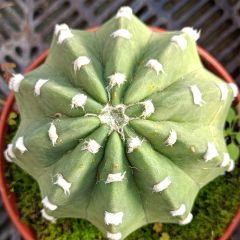
Echinopsis subdenudata
- Flowering time June
- Height at maturity 20 cm
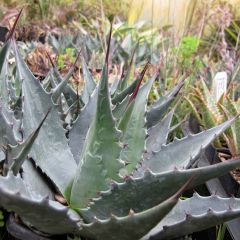
Agave montana
- Flowering time August, September
- Height at maturity 1 m
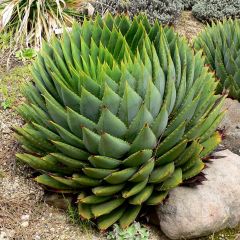
Aloe polyphylla
- Flowering time July, August
- Height at maturity 30 cm
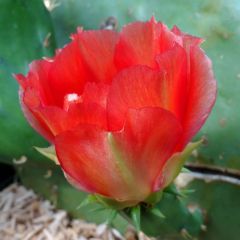
Opuntia engelmannii var. indheimeri - Prickly Pear
- Flowering time July to October
- Height at maturity 2 m
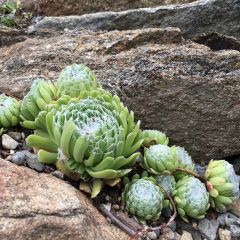
Sempervivum arachnoideum
- Flowering time July, August
- Height at maturity 8 cm
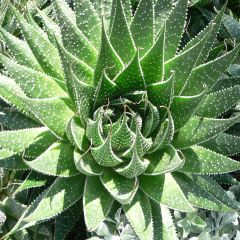
Aloe aristata
- Flowering time July, August
- Height at maturity 30 cm
Discover other Cacti and succulents
View all →Available in 0 sizes
Available in 1 sizes
Available in 1 sizes
Available in 1 sizes
Available in 1 sizes
Available in 1 sizes
Available in 1 sizes
Available in 1 sizes
Available in 1 sizes
Available in 1 sizes
Planting
Where to plant?
Cacti and succulents require warmth and excellent light: it is therefore important to choose a well-sunny location, for example, by placing them against a south-facing wall. They should also benefit from well-draining, filtering soil. Avoid heavy, clayey soils where moisture tends to stagnate. If possible, place them in an elevated spot, such as on a mound, slope, or at the top of a hill, as the soil will dry out more quickly. You can also create a rock garden to accommodate them, which will also highlight them beautifully!
You can also place your cacti or succulents under an eave, as this will protect them from rain and reduce the risk of rot.
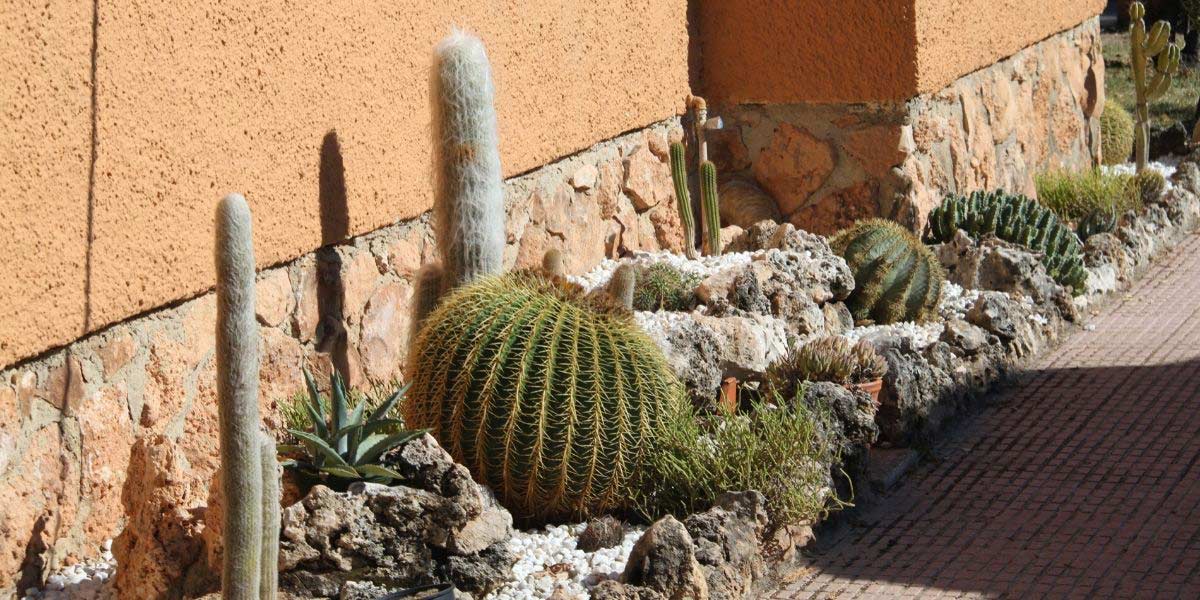 Choose a well-sunny location for your cacti and succulents, such as against a south-facing wall
Choose a well-sunny location for your cacti and succulents, such as against a south-facing wall
When to plant?
Plant your cacti and succulents in spring, as soon as there is no longer a risk of frost. This will allow them time to settle in before facing winter.
How to plant?
- Dig a planting hole about three times the size of the root ball.
- Add a mixture of one-third potting soil, one-third garden soil, and one-third drainage materials (gravel, coarse sand…)
- Remove your cactus or succulent from its pot and plant it, ensuring that the collar is not buried. You can use newspaper or thick gloves to avoid injury from the thorns.
- Wait at least 15 days before starting to water. Otherwise, the roots that may have been damaged during planting could rot.
- You can apply a mineral mulch (gravel, pumice, slate…)
For more tips and information, check out our guides How to Plant Cacti in the Garden?, How to Plant Succulents in the Ground in the Garden?, and How to Plant Succulent Plants in Pots?
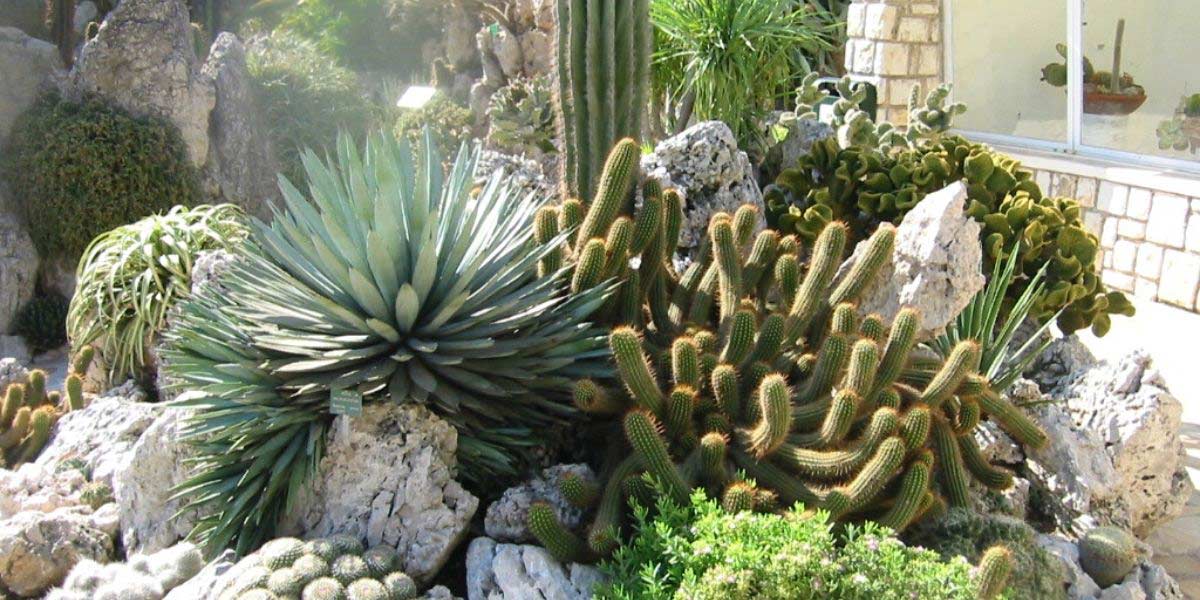 Don’t hesitate to create an elevated rock garden to host your cacti and succulents
Don’t hesitate to create an elevated rock garden to host your cacti and succulents
Read also
How to plant cacti in the garden?Care
Cacti and succulents planted in the ground generally do not need watering. However, you can carry out occasional waterings in the year of planting to help them settle in. Afterwards, they will easily manage without watering.
However, if you have placed your cacti in a sheltered spot from rain, such as under an eaves, remember to water them occasionally during the growing season, from spring to autumn. Preferably use rainwater.
For more information, you can consult our sheets How to Water a Cactus? and Watering Cacti: Mistakes to Avoid.
It is advisable to place a mineral mulch (gravel, pumice, slate…) around your cacti and succulents, a few centimetres thick. In addition to its aesthetic appeal, this limits the growth of weeds (and it is particularly tricky to weed and intervene around cacti due to their thorns… It is better to prevent weeds from growing than to have to regularly pull them out). Furthermore, mineral mulch has the advantage of storing heat during the day and releasing it at night, providing protection against the cold.
Although some cacti and succulents are relatively hardy, it is best to protect them in winter, especially from moisture. The drier a cactus is, the better it will withstand the cold. Therefore, you should reduce watering as winter approaches to encourage them to dehydrate and limit the risk of rot. Similarly, we recommend installing a removable roof over your cacti for winter (for example, using a sheet or plastic tarp, preferably transparent to allow light through).
You can also cover your cacti and succulents with fleece to protect them from the cold, but remember to remove it occasionally when temperatures are milder to allow for ventilation and prevent rot.
For more tips and information, discover our sheet “Preparing Your Succulents for Winter: Our Tips and Tricks” and “How to Protect Cacti in Winter?
Multiplication
We recommend propagation by cuttings for cacti, while clump division is more suitable for succulents (agaves, sempervivum, etc.).
Propagation by cuttings
Propagation by cuttings has the advantage of being a simpler and quicker technique than sowing. It works very well, for example, with the pads of Opuntia. Propagation by cuttings is also a good solution for saving cacti that have been damaged, rotted, or affected by a fungal disease.
- Cut the part of the cactus you wish to propagate, using a sharp, disinfected knife.
- We recommend sprinkling charcoal powder on the wound to prevent the development of fungal diseases.
- Then allow the cutting to dry by placing it in a cool, dry place, out of direct sunlight. This period can last from a week to several months, depending on the species you are propagating and the size of the cutting. You should see a callus forming on the cut surface.
- As soon as the cutting has healed, plant it in a pot filled with well-draining substrate and place the pot in a bright location, but out of direct sunlight.
Clump division
Some succulents, including agaves, aloes, and houseleeks, produce offsets over time next to the original rosette. It is quite possible to remove them to propagate the plant.
- Gently remove the soil around the offset you wish to take.
- Separate it from the original plant by detaching it at the base. Use a sharp, disinfected knife if necessary.
- Allow it to dry for a few days.
- You can then plant it in a pot or in the ground at another location, in well-draining substrate.
- Wait at least two weeks before watering.
→ Discover our tutorial “Propagating Cacti and Succulents”
Pairing ideas
Enjoy cacti and succulents to create a stunning dry and exotic garden! You can, for example, combine them with palms, cordylines, Phormium tenax, or euphorbias. Also discover the stunning Dasylirion wheeleri, which resembles yuccas but can withstand temperatures as low as -20 °C! For flowering, we recommend favouring warm shades (yellow, orange, red…) that will enhance the exotic atmosphere: you can plant alongside kniphofias, crocosmias, hedychiums, agastaches, Armeria maritima… The kniphofias, in particular, will pair beautifully with the yellow inflorescences of Aloe striatula! Also enjoy the graphic flowering of agapanthuses and eucomises.
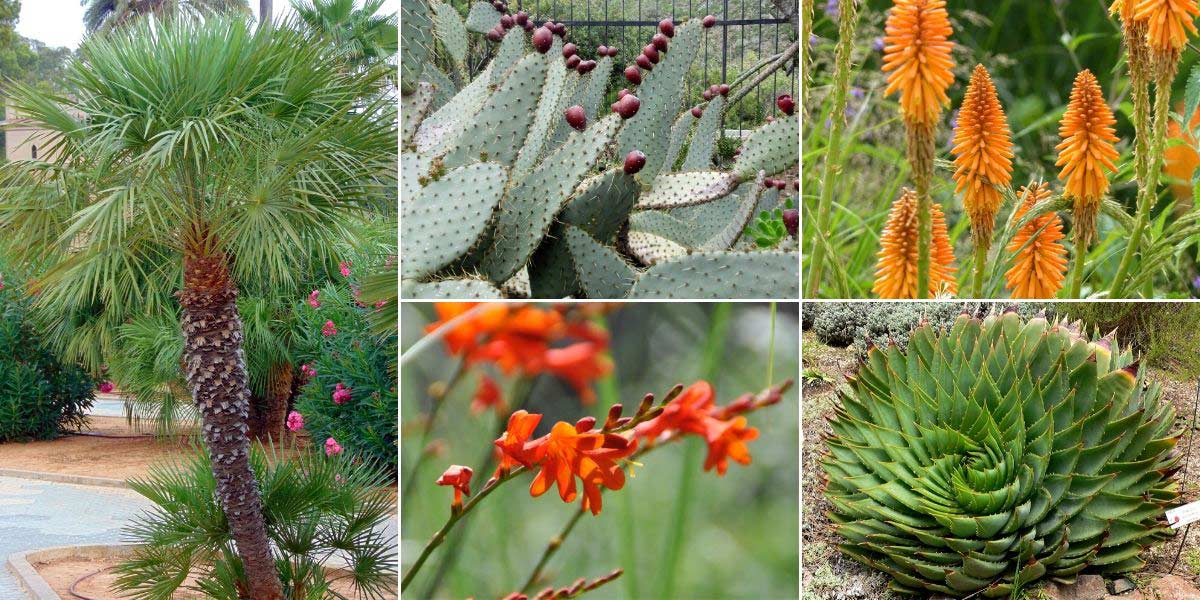
For a garden with a very exotic style: Chamaerops humilis, Opuntia engelmannii var. linguiformis (photo Krzysztof Ziarnek, Kenraiz), Kniphofia ‘Fiery Fred’, Crocosmia and Aloe polyphylla (photo Stan Shebs)
For more inspiration on plants to include in this type of garden, discover our advice sheet: 10 hardy plants for an exotic dry garden
You can also create a stunning Mediterranean atmosphere by combining your cacti and succulents with lavenders, sages, helichrysums, phlomis, helianthemums or cistus. Plant these in a mineral-dominant garden or in a raised rockery. We recommend playing with shades by incorporating some plants with blue or silver foliage, such as Stachys lanata, Senecio cineraria, santolina or Eryngium. Also discover the Euphorbia myrsinites: a lovely small euphorbia with sprawling stems and blue leaves. Finally, you can integrate some grasses like Stipa tenuifolia or Festuca glauca into the bed, which will bring contrast and lightness alongside the succulent plants.
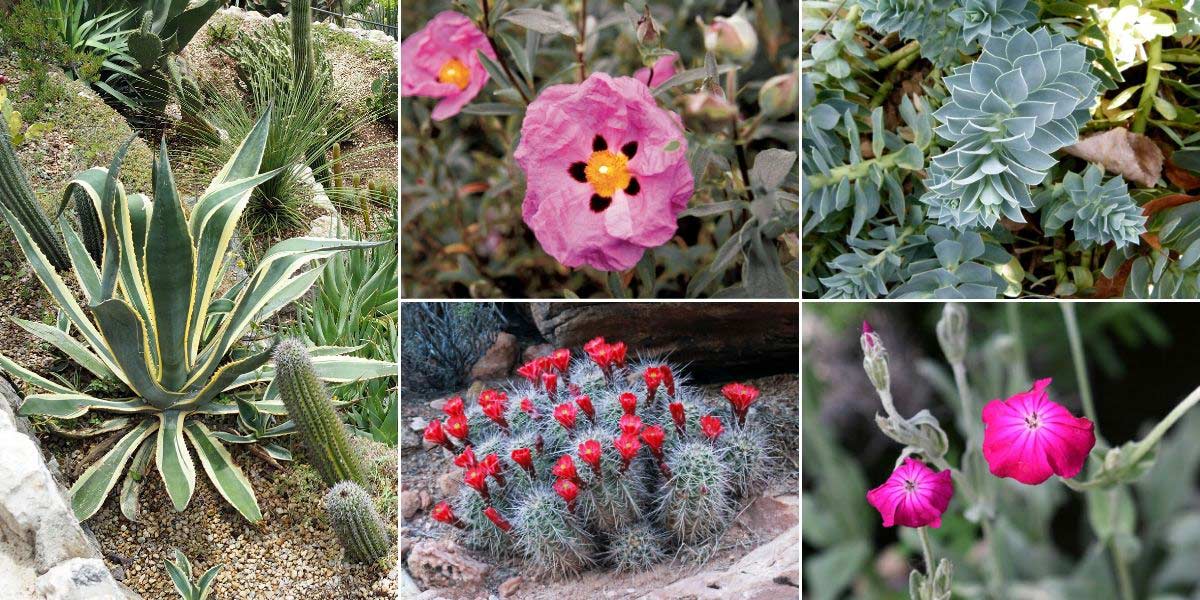
For a dry rockery, in a Mediterranean style, with some plants with silver foliage: Agave americana Variegata, Cistus purpureus, Euphorbia myrsinites, Echinocereus coccineus subsp. coccineus (photo Andrey Zharkikh) and Lychnis coronaria
Useful resources
- Discover our range of cacti and succulents
- How to repot succulents without damaging them? Discover our tutorial!
- For more information on growing Opuntia, check out our dedicated sheet!
- Also consult our article on growing Agaves
- Discover the site Cactus encyclo, an online encyclopedia about cacti
- Au Cactus francophone, a site with plenty of information and advice on cacti and their cultivation
- Find all our advice on cacti and succulents
- Check out our complete guide on Cacti and succulents for indoors
- Also discover our selections: 7 Iconic cacti and succulent plants and Hardy cacti and succulents
- Learn more about designing a dry exotic garden
- Discover 6 varieties of groundcover succulents
- Invite agaves, yuccas, and cacti into your garden!
Frequently asked questions
-
My cactus or succulent is rotting... Why?
If your succulent plant starts to rot, or if you notice it has black spots, this means it has been overwatered, or that the soil is not draining well enough for it. If you were in the habit of watering it, stop watering and ensure the soil can dry out. It is also important to shelter it from rain in winter, for example by installing a removable structure above it. Check that the substrate is sufficiently draining: once wet, it should be able to dry quickly. If this is not the case, dig up your plant and place it in a substrate made up of at least one third of draining elements (coarse sand, gravel...) and don’t hesitate to plant it on a mound.
-
How to save a cactus that has been overwatered?
We advise you to cut away the affected parts using a disinfected knife, and to apply charcoal powder to the wound to prevent the development of diseases. If your cactus has been more extensively affected, the best course of action is to take a healthy part to propagate it.
- Subscribe!
- Contents
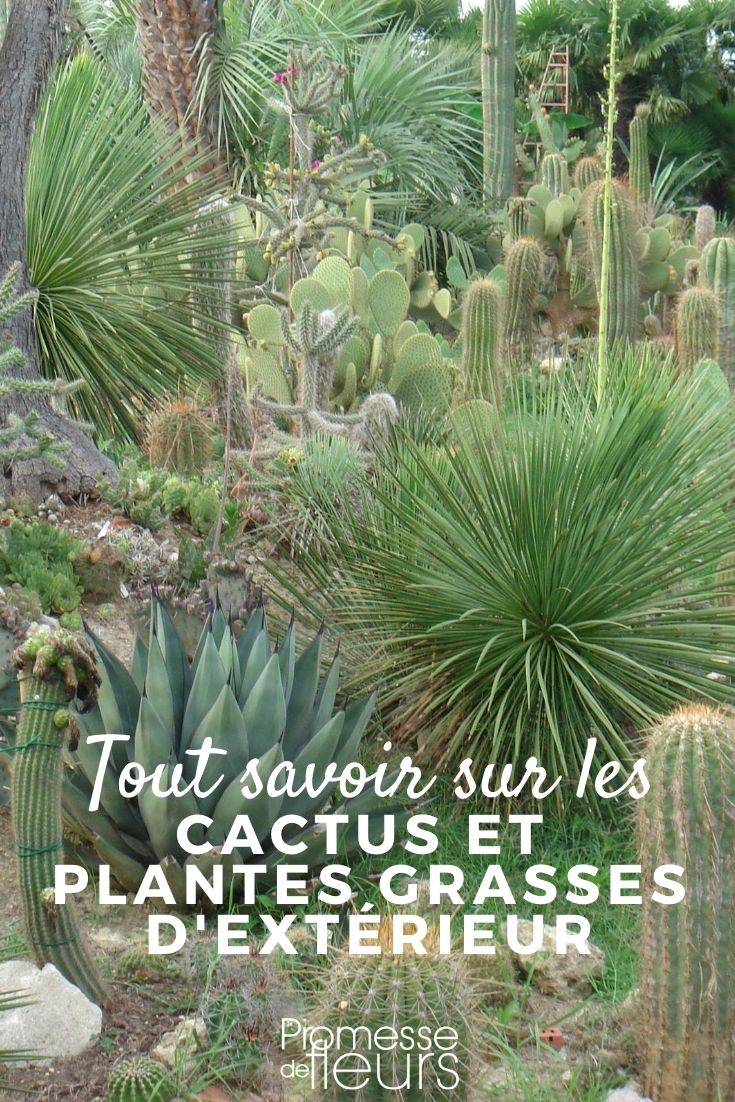































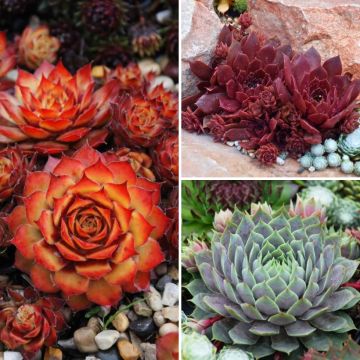
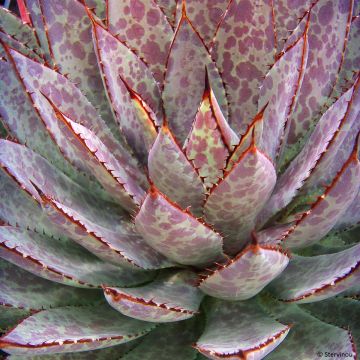
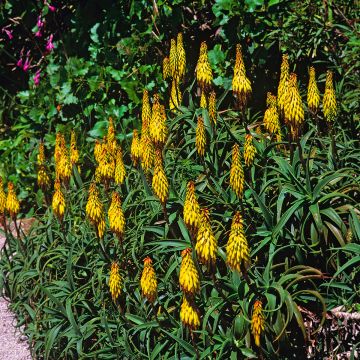
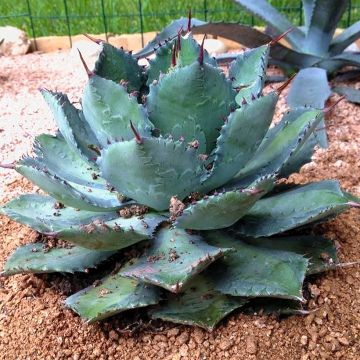
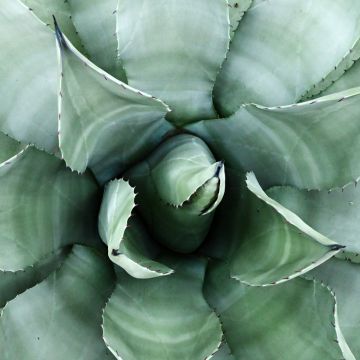
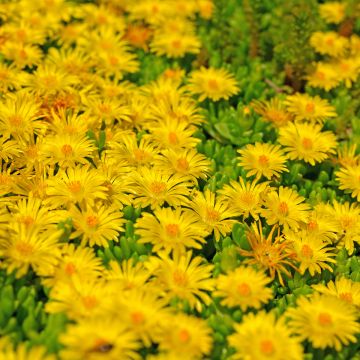
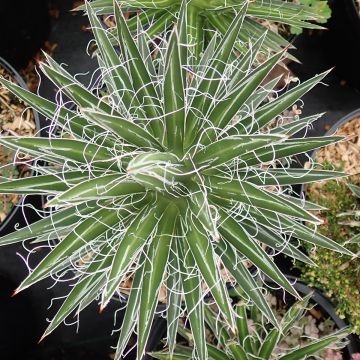
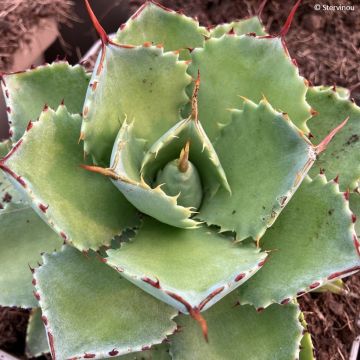
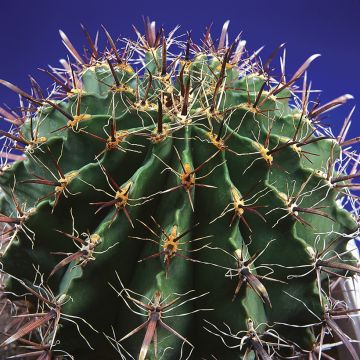
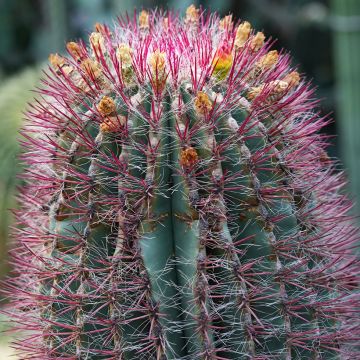
Comments